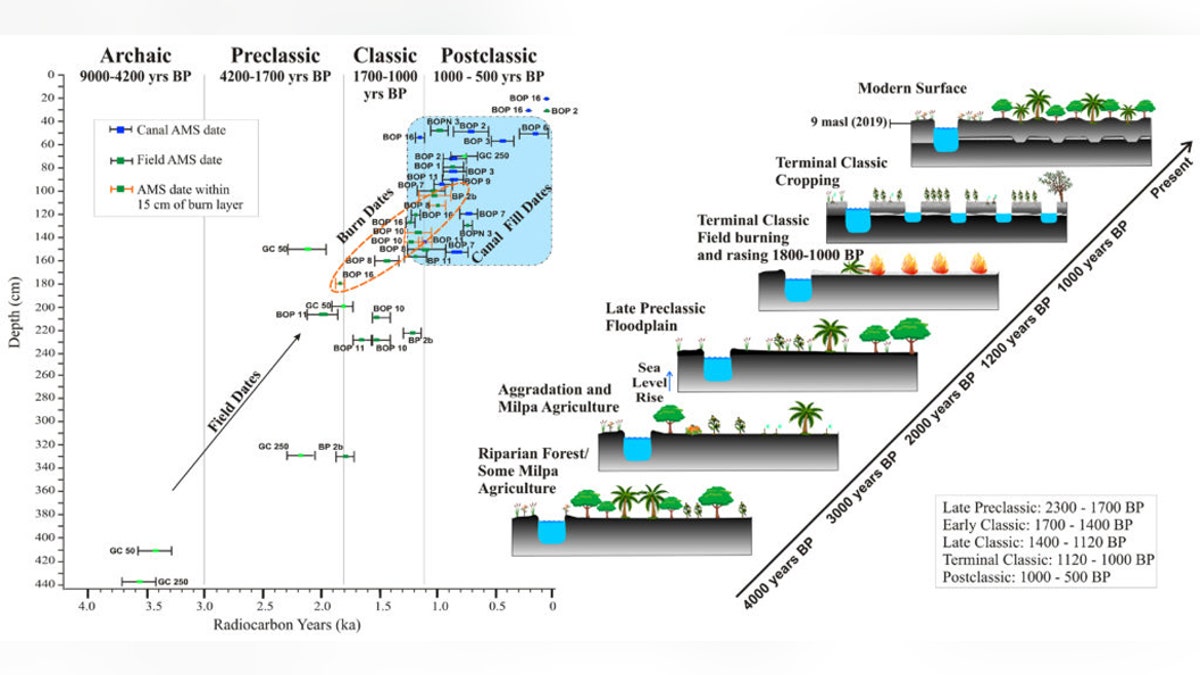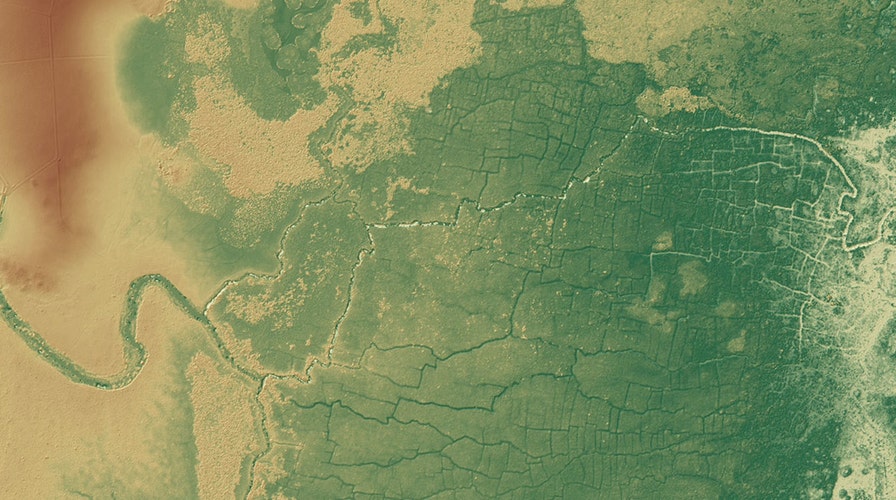Fox News Flash top headlines for Oct. 9
Fox News Flash top headlines for Oct. 9 are here. Check out what's clicking on Foxnews.com
A surprising new study suggests that ancient Mayans may have inadvertently caused their own demise by radically altering the climate.
The research looks at newly found evidence in Belize that shows the Mayans responded to increases in population and environmental pressures by creating canals and wetlands. They also had regular "burn events" while farming their lands, which may have caused a rise in carbon dioxide and methane in the atmosphere.
“We now are beginning to understand the full human imprint of the Anthropocene in tropical forests,” said the study's lead author, Tim Beach, in a statement. “These large and complex wetland networks may have changed climate long before industrialization, and these may be the answer to the long-standing question of how a great rainforest civilization fed itself.”

(Credit: University of Texas)
ANCIENT MAYAN CITY BURNED IN 'ACT OF TOTAL WAR,' SCIENTISTS SAY
The Birds of Paradise wetland was "five times larger than previously discovered," according to the release. Researchers also found another, even larger, wetland field complex in Belize.
“These perennial wetlands were very attractive during the severe Maya droughts, but the Maya also had to be careful with water quality to maintain productivity and human health,” the study's co-author, Sheryl Luzzadder-Beach, added.
The newly discovered evidence, based on aerial scans, is thought to have occurred between 1,800 and 1,000 years ago. Before recorded history, the largest increase in methane around the globe is thought to have occurred between 2,000 and 1,000 years ago, coinciding with the increase in the Maya wetlands, as well as those seen in South America and China.
“Even these small changes may have warmed the planet, which provides a sobering perspective for the order of magnitude greater changes over the last century that are accelerating into the future,” Beach added.

Accelerator mass spectrometry dates chart and conceptual model of wetland formation. (Credit: T. Beach et al., University of Texas at Austin)
The research has been published in the scientific journal Proceedings of the National Academy of Sciences.
MYSTERIOUS LOST MAYA CITIES DISCOVERED IN GUATEMALAN JUNGLE
The wetlands discovery is the latest in a series of fascinating Maya discoveries across central America.
Last year an ancient mask depicting a 7th-century Maya king was discovered in southern Mexico. Separately in 2018, archaeologists used technology to reveal lost cities and thousands of ancient structures deep in the Guatemalan jungle, confirming that the Maya civilization was much larger than previously thought.
From its heart in what is now Guatemala, the Maya empire reached the peak of its power in the sixth century A.D., according to History.com, although most of the civilization’s cities were abandoned around 900 A.D.
CLICK HERE TO GET THE FOX NEWS APP
Fox News' James Rogers contributed to this report.





















